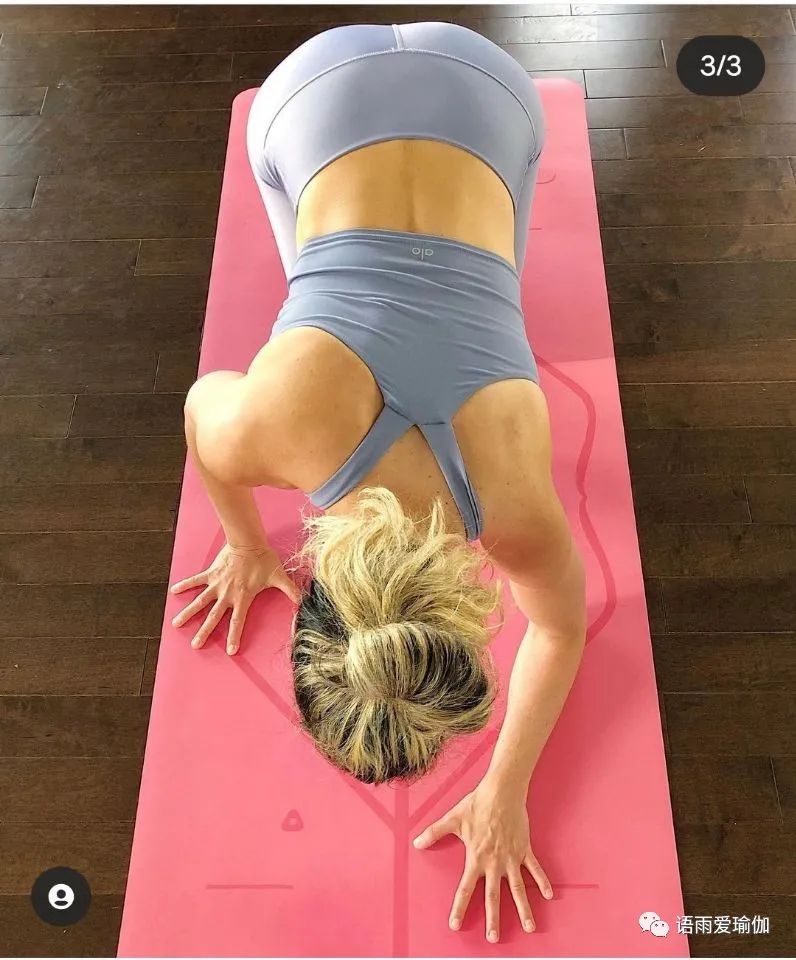Yoga inverted three-dimensional is very interesting, give us a new angle to see the world, let you more confident! The most common are head handstand, elbow handstand and hand handstand
. 
Today, we are going to talk about asymmetric elbow handstand
. 
It is a variant of elbow handstand
. 
Yoga elbow handstand needs more strength of arm, shoulder, back and core than head handstand
. 
It needs shoulder opening and back extension
. 
This asymmetric arm balance is difficult, it challenges your core, arms, shoulders and balance in different ways
. 
This pose is a variant of the elbow handstand
. 
If you can practice elbow handstand easily, try this pose
. 
If not, then continue to practice the first four preparation positions
. 
As usual, warm-up is very important
. 
Starting with the traditional 3-5 rounds of Japanese worship a and 3-5 rounds of Japanese worship B can help you get ready for your body before you start
. 
Forearm plate your foundation is very important when practicing asymmetrical forearm handstand
. 
Forearm plate is a good start, because it can exercise your whole body strength and prepare your shoulders and forearms
.
For the first week of practice, one minute is enough
.
2
.
Little Cobra this is a back bend
.
Using the anterior deltoid to lift the chest is actually opening the chest with the clavicle extended
.
Back muscles are concentrated on the spine to support the lift and back of the body
.
Tip: to activate your lower body, focus on your toes, press it down to the ground, and then gently lift your knees
.
3
.
Semi dolphin this preparation position can strengthen the arm, put the foot on the ground for strength exercise, and don’t worry about falling
.
The body is in an inverted V-shape similar to the downward dog position, and the arms are in the preparation position of asymmetric elbow handstand
.
Tip: focus on lifting the hips and spine to relieve pressure on the shoulders and arms
.
4
.
Lower forearm dog position in the lower dog position, the forearms are placed parallel on the mat at the same time, and equal weight is applied on both hands
.
Tip: in order to maintain the upright position, please tie a yoga belt (shoulder width apart) on the forearm to make the elbow in a straight line
.
5
.
Forearm handstand please practice elbow handstand before entering asymmetric elbow handstand
.
When you can lift your leg and hold it for one minute, you can challenge the next position
.
Next, let’s break down the pose 1
.
The arms will be in the semi dolphin position
.
It’s important to find the distance between the arm and shoulder, as well as the elbow alignment in practice
.
Tip: elbows support the body, especially its backward thrust
.
The harder you push the arm down, the more support you’ll get
.
2
.
Raise your hips and concentrate here so that your hips are as close to your shoulders as possible
.
Even if you have two different movements of your arms, you have to lengthen the sides of your body
.
Tip: the farther away the hips are from the shoulders, the easier it is to maintain balance, because there is less change in posture
.
The higher the hips, the less momentum and the greater the strength of the handstand
.
3
.
To enter the pose, first of all, focus on raising your legs
.
If you want to try other challenges, separate your legs or form a Archer pose
.
If you want to challenge the core, see if you can raise your legs at the same time!.
.


